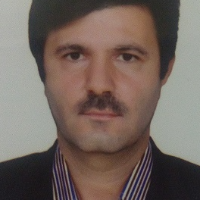Interaction of silicon and phosphorous fertilizers on lodging related traits and nutrients uptake in rice (Oryza sativa L.) cv. ‘Tarom Hashemi’
The major problem of paddy fields in Mazandaran province is the low solubility and uptake of phosphorus. This essential macro-element for plants is added to the soil as phosphorus fertilizer; but, the major part of this element is immobilized due to fixation in the soil and is unavailable for the crop plant (Zhu et al., 2011). The consequence is that farmers are turning to intensive farming and high consumption of chemical inputs (Ramezani & Hanifi, 2011). Therefore, to solve this problem, the plant growth promoting rhizobacteria (PGPB) and plant growth promoting fungi (PGPF) in the rhizosphere as well as insecure phosphate solubilizing bacteria (PSB) and phosphate solubilizing fungi (PSF) can be considered as a solution for providing consuming phosphorus for the crops (Lavakush et al., 2014). Other key solutions to solving this problem is the consumption of silicon fertilizer sources, which can be very beneficial. In fact, silicon increases phosphate uptake due to convergence with phosphorus. In addition, silicon consumption reduces plant lodging index and pests and diseases of crops (Datnoff, 2011). Therefore, this research was conducted with the aim of investigating the interaction of silicon and phosphorus fertilizer resources on the lodging indices and quantitative and qualitative parameters of rice.
The experiments was conducted as split plots based on a randomized complete blocks design (RCBD) with three replications in Amol region during 2017 and 2018. Four levels of silicon fertilizer including control (non-consumption), spray of nano-silicon, soil consumption of potassium silicate and soil consumption of calcium silicate were used as main plots and four levels of phosphorous fertilizer including control (non-consumption), chemical fertilizer (100 kg P2O5 ha-1), 50 kg P2O5 ha-1 + Herbaspirillum seropodicae bacteria inoculation and 50 kg P2O5 ha-1 + mycorrhiza fungi (Gholusmosseae) inoculation were used as sub plots. During the growth period, after the removal of marginal effect, traits were randomly measured according to the Standard Evaluation System (SES) of the International Rice Research Institute (IRRI). All statistical analysis was performed using the SAS software. A two-way analysis of variance (ANOVA) was used by GLM procedure and the least significant difference (LSD) test was used to compare the differences among treatment means at a 5% probability level.
In order to investigate the effect of silicon and phosphorous consumption on rice in the two years, firstly the data were measured by using the Bartlett method of variance homogeneity test. The results demonstrated that all the investigated traits were non-significant in the Bartlett's test, for which combined analysis of variance was performed. The lowest lodging index was obtained by spraying nano-silicon. But, the lodging index with phosphorus treatment was vs silicon usage that the highest lodging index was obtained by using chemical fertilizer + bacteria inoculation. The highest paddy yield (5147 kg ha-1) was obtained at interaction of nano-silicon spraying and using chemical fertilizer + bacteria inoculation, in this regard, chemical fertilizer treatment along with using chemical fertilizer + fungi inoculation got ranks next, respectively. Spray of nano-silicon leads to higher uptake of nutrient (Si, N, P and K) and improving qualitative and quantitative product compared to soil consumption of potassium silicate and calcium silicate, in this regards potassium silicate and calcium silicate stood ranks second and third, respectively. In addition, combined consumption of phosphorus + bacterial inoculation had higher positive effect on nutrients (Si, N, P and K) uptake than chemical phosphorous uptake along with phosphorus + fungi inoculation.
According to findings, it can be concluded that spray of nano-silicon along with consumption of chemical fertilizer + seed inoculation with bacteria can increase the quantitative and qualitative yield of rice and control the blast disease in the paddy fields.
- حق عضویت دریافتی صرف حمایت از نشریات عضو و نگهداری، تکمیل و توسعه مگیران میشود.
- پرداخت حق اشتراک و دانلود مقالات اجازه بازنشر آن در سایر رسانههای چاپی و دیجیتال را به کاربر نمیدهد.


